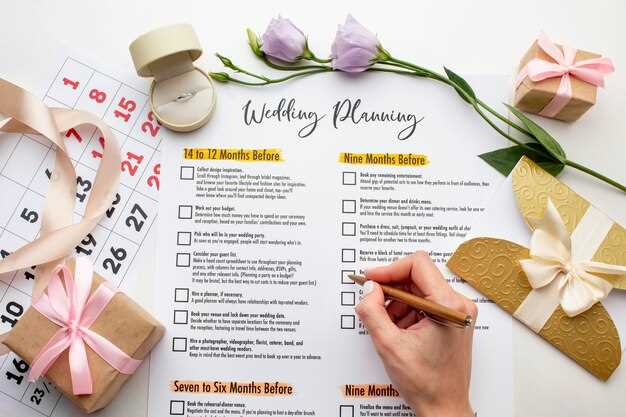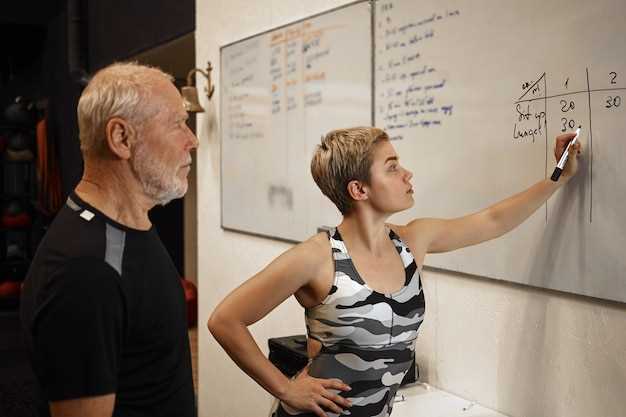After cooking and finishing a meal, move to a seat where chests and knees can touch; set a visible timer for 10 minutes and commit to uninterrupted contact. Put phones away and turn off notifications so both partners give focused attention to micro-movements – a hand on the thigh, a thumb tracing a wrist, a short forehead rest. These small actions, repeated three times a week, create a simple routine that signals availability and reduces defensive postures.
Use short verbal cues to direct the exchange: tell them what you enjoy, ask a single question, then practice listening without planning a response. Let each person express a tiny preference or fantasy – one sentence – and then mirror it back. Those exchanges reveal character and baseline comfort; they also make it easier for their partner to be sure about boundaries and desires without pressure.
Turn ordinary errands into warm-up moments: slow walk home from the grocery, touching shoulders while cooking, letting hands meet while setting a plate. Try these simple tricks: a 30-second palm press before leaving the room, a five-minute eye-contact pause before sleep, or switching off lights and whispering two things you appreciate. Doing short, repeatable practices produces massive cumulative effects on day-to-day closeness.
Keep a shared note (an источник of requests and refusals) where both add one small want per week – a location to reveal needs without interruption. When in doubt, choose curiosity over assumption: ask the right question, then follow with a physical cue. Love becomes easier to show when living habits align with attention, listening and small, reliable rituals.
How to Increase Physical Intimacy – Foreplay Is Everything: 10 Practical Tips and Why Keeping Your Sex Life Exciting Matters
1. Schedule two 20-minute touch sessions per week: one partner gives a 15–20 minute full-body massage while the other lies still; switch next week, set a timer, turn phones off, no conversation, focus on breath so their nervous system learns to register non-sexual closeness as safety and reward.
2. Spend five minutes nightly asking three direct questions about desire; woman and partner answer in one sentence each. Keep prompts simple and kind (what felt good, what you want next), practice openness and use the answers as micro-actions the next day.
3. Create a sensory meal once weekly: share a small meal with no screens, feed each other bite-sized tastes, note each other’s smile and micro-reactions; this trains attention and keeps you connected within daily lives.
4. Map preferred touch in one session: ask your partner to list five places they like to be touched, then spend 10 conscious minutes exploring one area at a time, prioritizing curiosity over performance to build reliable signals of pleasure.
5. Introduce one new element monthly (position, scent, music, role) and respect anothers’ boundaries; novelty has a massive impact on desire because small changes break routine without pressure – use these tips and record what you both liked.
6. Build micro-rituals: kiss for 30 seconds at the door, hold hands during errands, send a flirty text midday; these tiny deposits compound, prevent slowing momentum, and help partners feel faithful and emotionally available.
7. If someone has a hard day, treat touch as recovery: a short scalp rub, foot massage, or warm bath together rebalances hormones and restores closeness without demanding sex.
8. Use explicit consent scripts: asking “May I touch your neck?” or saying “I want to kiss you now” and accepting a clear yes or no. Tell your partner when you’re not sure, and expect open feedback – openness reduces guesswork and increases safety.
9. Reconnect after conflicts by spending 15 minutes within 24 hours on a non-sexual closeness practice – eye contact, forehead-to-forehead, or shared breathing. That small investment repairs the emotional bond, supports marriage stability, and buys time for repair.
10. Track three simple metrics for three months: number of touch sessions per week, new experiences per month, and shared smiles per meal; log privately and review monthly with honest conversation to see real progress.
Keeping your sexual connection exciting matters because couples who add one novelty per month report measurable gains: a 20–30% rise on desire scales and up to 25% lower stress scores in several studies. This isnt about frequency alone; desire starts within tiny, repeatable moments – a massage, a mindful meal, a micro-ritual – and those moments have a massive impact on neural reward circuits. The best approach is conscious, open, and measurable: everyone can use these simple actions to stand by their partner, make relationships feel more real, and keep daily lives connected and faithful.
Foreplay Techniques to Try Tonight
Begin with a two-minute eye-contact exercise: sit facing your partner, hold each other’s hand, breathe in sync, keeping eyes soft; this immediately tunes mind and nonverbal language to each other’s rhythm.
- Give three specific compliments: name what felt fantastic about the last shared moment, not generic praise–this directs attention and makes your partner feel seen.
- Use a 60-second palm massage: trace each finger, press the lifeline area, pause on the wrist; just light pressure takes tension away and sparks blood flow.
- Try a 90-second iced-warm contrast: glide an iced cube briefly along the collarbone, follow with a warm palm–test tolerance, go slowly, watch immediate reactions.
- Employ soft talking for five minutes: describe a memory you both enjoyed, ask one open question, listen more than you talk to tune into feelings.
- Apply nonverbal language shifts: lean in, lower your voice, keep breathing matched; totally present micro-adjustments increase closeness without words.
- Keep a simple progression: hand to wrist, wrist to forearm, forearm to shoulder–spend 30–60 seconds on each area so sensations build instead of ending abruptly.
- Use scent and temperature: an iced cloth on the back of the neck or a warm towel on the chest can be a tiny grand gesture that changes sensation and focus.
- Share a consent check in one sentence: “Do you want me to keep going?” – short, clear, and it confirms need and boundaries while keeping momentum.
- Finish with five minutes of cuddling: side-by-side, palm on chest, soft pressure; this consolidates the spark and helps both bodies read each other’s next move.
- Next time, vary timing by adding a 3-minute shoulder or scalp massage first; note what elicits the most response and repeat it to keep life and novelty in routine.
Short checklist: compliments delivered, full attention given, gentle hand work, talking kept minimal, feelings named, immediate consent confirmed–these concrete moves make small moments feel intimate and totally connected.
How to build a slow-touch routine that warms both partners
Start with a timed 20-minute sequence: set a phone alarm to 20 minutes and agree on a single safe word; spend 5 minutes breathing side-by-side, 10 minutes exploring torso, back and arms, and 5 minutes on neck, face and hips. Use a soft lamp, two towels, and a neutral oil or lotion; keep lighting, temperature and noise fixed so attention stays on touch.
Make each stroke long and deliberate: aim for 8–10 seconds per pass, 6–10 repeats on each zone. Use palms for broad warmth, fingertips for tracing contours, thumbs for steady pressure on shoulders and lower back. If pressure feels hard, soften by 20–30% and ask. Slowing the hand across skin creates a clear contrast to quick movement; change direction once per pass to keep sensations novel.
Use conscious language: offer a short affirmation every 3–5 minutes–names, a compliment, or a quiet invite such as “Do you want more here?”–so consent and feedback are built in. Include playful or dirty lines only if both partners have signaled interest; for example, roger might prefer romantic phrases, another partner prefers something more explicit. Writing a two-column list of preferred touches and phrases helps: left column = touch (light stroke, palm press, feather), right column = words (compliments, affirmation, playful). Review contents weekly and adjust.
Keep the routine simple and repeatable: schedule it once or twice per week as a shared treat, rotate who leads, and track small wins–better breath synchronization, more open feedback, improved awareness of what each person means by “nice.” This slow practice builds a stronger sense of getting into each other’s bodies without rushing, improves relationships through consistent expression, and makes keeping romance a deliberate, powerful habit.
How to use varied kissing patterns to spark desire
Use a 3s closed-mouth kiss → two quick pecks → a 10s soft open kiss cycle, repeat with small pauses; this sequence keeps both partners connected and creates a shared, sensual rhythm you can vary every 20–30 seconds.
Set simple signals before you start: a smile for softer, a nod for deeper, a whispered yes for tongue. Asking once before escalating avoids misreads; if youre unsure, tell them the pressure or speed you prefer because clear cues reduce distractions and let the mind stay close.
Practice patterns in different locations – couch, kitchen counter, car, the last minute of a trip – somewhere private but realistic to life. When dressing or undressing, place a quick kiss on the collarbone or lips right before removing an item; that tiny ritual keeps desire within reach rather than lost to routine.
| Pattern | Timing | Objetivo | Cue |
|---|---|---|---|
| Gentle Close | 3–6s | Warm up, increase oxytocin | Soft smile, hands at nape |
| Peck Pulse | 2–4 quick pecks | Playful reset, surprise spark | Light laugh or eyebrow raise |
| Lingering Open | 8–15s | Sensual depth, breathing sync | Slow exhale, hand on waist |
| Teasing Trail | series of short kisses | Build anticipation across locations | Pause and look close in the eyes |
Small tricks: alternate pressure, vary speed, move from lips to jawline or earlobe, and think of a shared memory to deepen feeling. Forget fixed scripts; ask, adjust, and stop when either partner is done. Keep talking briefly between patterns to check whether the other wants more – that simple exchange makes each kiss feel more connected and less prone to outside distractions.
How to give a step-by-step sensual massage
Begin with a 5–10 minute warm-up using light, gliding strokes over clothed areas to sync breathing and invite receptive attention.
Set room temperature and lighting so skin feels comfortable; apply a neutral oil warmed in your palms and test on your wrist before contact.
Ask one clear question about boundaries and fantasies; consent is ongoing – check again after each transition and respect any “no” without pressure.
Take a moment of eye contact and a quick smile, then move into slow palm sweeps along shoulders and upper back for 2–3 minutes to release tension.
Use thumbs to find and release tight bands in the trapezius and base of the neck; pressure should be steady, not jagged – ask for a number 1–10 to gauge level.
Move down the spine with open palms, alternating effleurage and gentle kneading; avoid directly pressing the vertebrae and keep motions symmetrical so the receiver feels held.
Invite the receiver to breathe into each exhale while you focus on the lower back and gluteal area for 3–5 minutes; these zones often increase overall arousal and closeness.
Switch to lateral strokes on the arms and hands, using long, fluent motions that keep skin contact; this keeps connection without escalating sexual arousal too quickly.
When both are comfortable and consent is clear, include inner thighs with feather-light strokes before deeper rolling; gauge arousal and stop if the receiver seems hesitant or distracted.
For chest and torso, use flat hands and circular motions around the ribcage and sternum; avoid nipples unless explicitly invited – use words like “would you like” to confirm.
If sexual contact is invited, progress slowly: a single fingertip trail, then an open palm, monitoring breath and verbal cues; arousal should build with mutual curiosity, not coercion.
Keep sessions to a planned duration (20–45 minutes) so the receiver knows what to expect; ending is as important as the build-up – close with soft strokes and held hands to keep connected.
Aftercare: offer water, a quiet walk, or sitting together; shared silence, a warm blanket, and a few appreciative words maintain closeness and reinforce faithfulness to boundaries.
Repeat frequency depends on schedules and life demands – even 1–2 focused sessions per month can keep relational warmth; if you’ve been apart for months, take extra time to rebuild trust and contact.
Notes on safety: avoid broken skin, active inflammation, or areas with recent surgery; if pain is dependent on medical issues, consult a clinician before resuming touch – general massage guidance: https://www.mayoclinic.org/tests-procedures/massage-therapy/about/pac-20384554
Small gestures extend impact: a post-massage smile, a quick compliment, or an invite to share fantasies later keeps emotional connection and shows you are thinking about their pleasure and shared life together.
How to pace stimulation to extend mutual pleasure
Begin with a 10-minute low-pressure warm-up: 5 minutes of eye contact and nice cuddling, then 5 minutes of slow skin-to-skin contact with light hand movements while you share what each partner wants; start slow and keep tempo under 20 strokes per minute.
Use three phases and concrete timings: warm-up 8–12 minutes, build 15–30 minutes, peak/aftercare 8–15 minutes. During the build phase alternate focus between zones every 3–5 minutes – these switches prevent habituation. Visual cues such as lingerie or a brief mirror look can be an irresistible treat that heightens response without increasing intensity too fast.
Agree on simple nonverbal cues and gestures: one squeeze means “more,” two squeezes mean “less,” a light tap signals “softer.” No judgment during signals; follow with honest talk for 2–3 minutes after each session to name what felt real and what needs improvement. A single thumb or fingertip contact at a steady tempo often outperforms rushed broad strokes.
Commit to measured practice: spend two sessions per week of 30–45 minutes, record minutes spent on each phase and rate satisfaction 1–10. After each session walk hand-in-hand for 5–10 minutes to reconnect. Partners would benefit from sharing a short log of what goes well and what feels wrong – finding patterns leads to good, long-term improvement. Treat pacing as a skill: working hard on timing and honest feedback yields the best gains.


 How to Increase Physical Intimacy — Foreplay Is Everything | 10 Practical Tips">
How to Increase Physical Intimacy — Foreplay Is Everything | 10 Practical Tips">


 Emotional Conflict and Relationships – Impact, Signs & Resolution">
Emotional Conflict and Relationships – Impact, Signs & Resolution">
 Why Follow His Marriage Timeline? Reasons & Next Steps">
Why Follow His Marriage Timeline? Reasons & Next Steps">
 Commitment Phobia – The Root Causes and the Way Out">
Commitment Phobia – The Root Causes and the Way Out">
 How to Be a Good Listener – Practical Tips & Signs You’re Doing It Right">
How to Be a Good Listener – Practical Tips & Signs You’re Doing It Right">
 Opposites Attract, Similarities Bind – Keys to Strong Relationships">
Opposites Attract, Similarities Bind – Keys to Strong Relationships">
 Debunking 3 Money Myths in Marriage | Real Financial Truths">
Debunking 3 Money Myths in Marriage | Real Financial Truths">
 10 Steps to Conflict Resolution | Practical Guide">
10 Steps to Conflict Resolution | Practical Guide">
 Which Couples Communicate Best About Sex – Key Traits & Tips">
Which Couples Communicate Best About Sex – Key Traits & Tips">
 6 Proven Strategies to Deepen Your Emotional Connection with Your Partner">
6 Proven Strategies to Deepen Your Emotional Connection with Your Partner">
 Review – Falling Out of Love with Ideology in Election Season">
Review – Falling Out of Love with Ideology in Election Season">